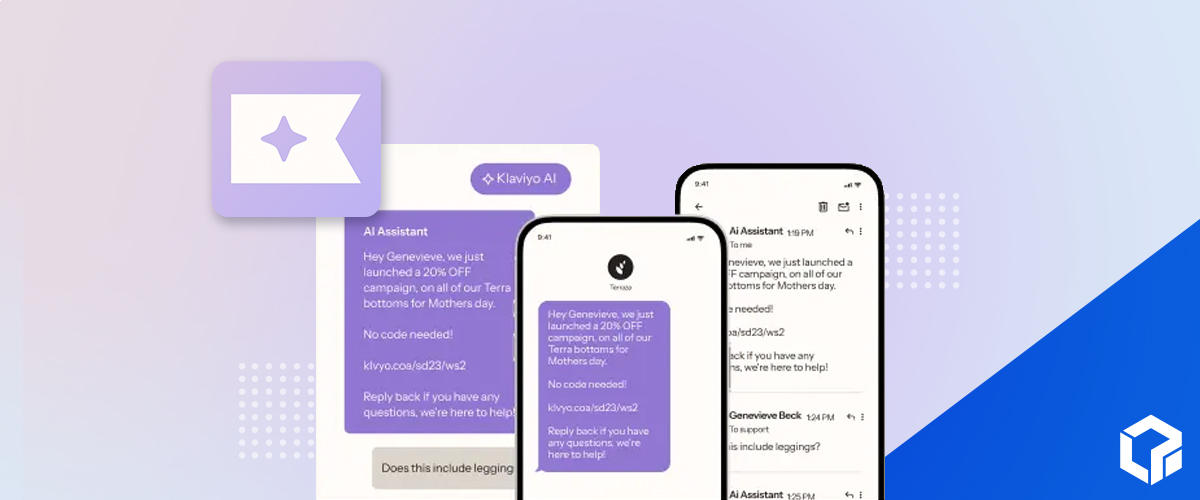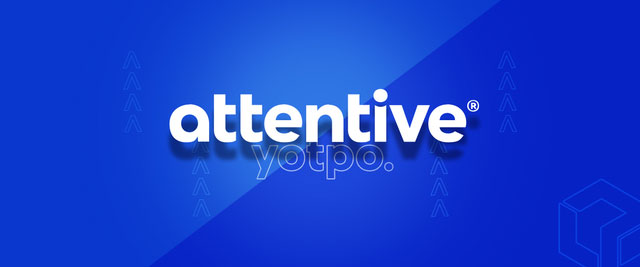Users don’t live in one channel, and your marketing shouldn’t either.
Email and social media ads are powerful media tools in their own right, but when they’re disconnected, the experience can be jarring. Clashing visuals, mixed messages, and offbeat timing erode trust, ultimately hindering conversions. However, when well coordinated, these channels create a seamless brand experience that moves customers effortlessly from curiosity to conversion.
Customer Journey = Three-Act Story
Every brand interaction is a scene out of the same book. When each scene connects, the result feels natural and memorable.

Act I: Awareness Meta Ads
This is your first impression. Meta ads should do more than sell—they should express your brand’s values, tone, and personality through creative that sparks curiosity and emotional connection.

Act II: Engagement Email Marketing
The story continues here, turning attention into action. Email should pick up where your ads leave off, reinforcing the same tone and visuals while guiding prospects toward the next step with clarity and trust.

Act III: Conversion Website Experience
The moment of payoff. Website’s should feel like the next step in a familiar conversation, matching the look and feel of your ads and emails while making it easy for customers to follow through.
Each act builds trust. If one scene feels off, the audience checks out. Consistency across Meta ads and email campaigns isn’t just nice to have, it’s what keeps your customer engaged until the curtain call.
Aligning the Customer Journey
Nearly 90% of brands surveyed by Demand Metric agree that brand consistency across all channels is extremely important, and 71% confirm that inconsistency harms performance. From the first impression to the final click, alignment builds recognition and trust.
Consistency goes beyond fonts and colors. It’s about storytelling, tone, and emotional continuity.
A bold, humorous Meta ad shouldn’t lead to a templated, dry coupon email. Likewise, a trust-driven email shouldn’t lead to a chaotic landing page. When everything feels part of one story, you replace friction with flow, and flow builds conversions.
Confidence can be the difference between clicking “buy now” or closing the tab.
Meta’s Role in the Customer Journey
Paid Social isn’t just for awareness. With the right structure, Meta can influence every stage of the funnel:
- Awareness: Prospecting campaigns introduce your brand with scroll-stopping creative.
- Consideration: Retargeting ads educate, demonstrate, and persuade through testimonials and benefits.
- Conversion: Dynamic product ads and limited-time offers close the deal.
- Loyalty: Post-purchase ads build community and promote repeat sales.
When these campaigns align with your email flows, each touchpoint builds momentum. A testimonial ad that leads to a case-study email, followed by a trust-driven CTA, creates a narrative your audience can follow.
Disjointed creative confuses. Coordinated creative converts.
Email’s Role in the Customer Journey
Email turns curiosity into connection. After your ads spark awareness, email nurtures intent, translating a passing moment of interest into a lasting relationship.
While ads reach a broad audience, email speaks personally. It acknowledges behaviors, preferences, and progress through the funnel. Done right, it becomes both narrator and guide, reminding the customer why they cared in the first place and providing an easy path to take action.
When Done Right
- Reinforces what your Paid Social introduced
- Nurtures intent with education, social proof, and offers
- Keeps your brand top of mind when the scroll ends
- Builds emotional familiarity through consistent tone and design
In a multichannel strategy, email is the heartbeat, steady, data-driven, and personal. It translates campaign energy into a connected customer experience.

Step-By-Step Guide to High Performance
Whether you’re just getting started or looking to optimize an existing program, this checklist will establish a stronger email marketing foundation that sets your business up for success.
Get Your GuideYour Shared Playbook Coordinating Email and Paid Social
The most effective campaigns aren’t just cross-channel, they’re cross-connected. When your email and Paid Social teams plan together, the impact multiplies.
1. Start with Shared Planning
Build a campaign calendar that maps messaging, visuals, and timing across both channels. If your new product launches on Friday:
- Tease it through Meta ads early in the week
- Mirror that teaser in your email creative
- Carry the same tone and visuals into your launch email and retargeting ads
Consistency builds recognition. Recognition drives action.
2. Align Creative and Messaging
Your ad and email shouldn’t be identical, but they should feel like the same conversation.
Keep the same:
- Product imagery
- Offer language
- Value proposition
- Tone of voice
A strong message conveyed in multiple formats is more effective than multiple messages conveyed once.
3. Sync and Segment Audiences
Use Meta’s Custom Audiences to align your CRM data:
- Welcome list → warm awareness ads
- Engaged readers → conversion ads
- Lapsed buyers → re-engagement ads with testimonials or promos
- High-value segments → lookalike prospecting audiences
Integrate your email platform, such as Klaviyo, and your CRM with Meta to automate data syncing.

Learn More About Email Flows
Unlock how win-back campaigns support a fully automated, growth-driven email strategy built for lasting customer value.
Get Your Guide4. Match Timing and Offers
Never let one channel contradict another. If your Meta ad says “Sale ends Sunday,” your email shouldn’t promise “Deals all week.”
Misaligned urgency kills trust. Consistency builds recognition, which creates action.
5. Extend the Story Post-Purchase
Post-purchase emails, such as thank-yous, reviews, or referrals, can be mirrored in Paid Social through UGC, testimonial, or loyalty campaigns. Each reinforces the same customer satisfaction loop.
When your email and Paid Social efforts share one playbook, they don’t just coexist; they compound.
Tracking What Matters
Alignment isn’t just creative, it’s analytical. To determine if it’s working, track how the channels interact with each other.
Core Metrics by Channel
- Open rate
- Click-through rate (CTR)
- Conversion rate
- Unsubscribe rate
- Post-click engagement
Paid Social
- Impressions and reach
- Page Views
- Cost per result (purchase, lead, add to cart, etc)
- Return on Ad Spend (ROAS)
- Average Order Value (AOV)
Side-by-side tracking reveals how bounce rate, time on site, and pages viewed interact with impressions and reach in prospecting and retargeting campaigns on Meta.
Cross-Channel Performance Signals
The real value of a coordinated campaign isn’t just in one channel’s performance, it’s in how they work together
Signs of impact:
- Meta page view metrics improve among recent email openers
- Email engagement rises after users interact with a Meta ad
- CRM-based Meta audiences outperform cold audiences
These signals indicate that your ecosystem is functioning as a cohesive unit.
Attribution Making the Data Make Sense
One of the most challenging aspects of cross-channel marketing is accurately attributing conversions.
- Klaviyo gives credit on a 5-day last-click basis.
- Meta uses a 1-day view and a 7-day click metric, which can lead to double-counting.
If someone clicks a Facebook ad on Monday, clicks an email on Tuesday, and makes a purchase on Wednesday, both parties claim the sale.
Clean It Up
- If using the standard 1-day view, 7-day click, pay attention to the number of conversions each window claims. View-through conversions are more challenging to verify and can often overstate their influence.
- Keep Klaviyo at 5-day click unless you’re running a shorter flash campaign.
This approach keeps both platforms click-based and better aligned, even if it’s not perfect.

Level Up Attribution
For more advanced brands, consider Incremental Attribution. Instead of asking “Who got the last click?” it asks, “Would this conversion have happened without the ad?”
Get Your GuideBiggest Impact:
- You treat Meta’s role as a contributor, not just a closer
- You compare performance with and without ads to understand lift
- You remove reliance on platform-reported conversions that may overlap with email
It provides a clearer picture of how Paid Social supports lift across the funnel, especially when working in conjunction with Email and SMS, which often drive the final conversion
Creative Strategy Where Consistency Converts
True brand consistency is more than matching logos. It’s aligning creative intent across every channel.
Design for Cohesion
- Use consistent, legible fonts across email and Meta
- Stick to a defined color palette and reserve accent colors for CTAs
- Avoid clutter. Minimal design reads as confident design
- Plan photo and video shoots for multiple crops (4:5, 1:1, 9:16, hero banners)
Direct Attention Intentionally
- Have models look toward products or CTAs
- Use visual cues like gaze and layout to guide attention
- Keep hero products central and unobstructed
Cut short GIFs from your Meta video content to use in emails and other messaging platforms. Maintain consistent motion style. Quick cuts and bold overlays on social media shouldn’t turn into slow fades in email.
Don’t Skip Alt Text
Ensure accessibility and professionalism

- Always include short, descriptive phrases
(e.g., “Red knit sweater on model”) - Reinforce CTA if relevant:
“Shop Now – 20% Off Holiday Styles” - Test in Gmail and Outlook

Meta
- Add alt text in Ads Manager under creative tools
- Describe visuals simply
(e.g., “Customer holding wireless earbuds”) - Don’t repeat headlines, focus on what’s visible
Conclusion Turning Coordination Into Conversion
Customers don’t see channels; they see one brand. Every interaction either builds or breaks that perception. When Email and Paid Social work in sync, you create momentum—each touchpoint strengthening the next with familiarity and trust. The brands winning today aren’t louder; they’re clearer, connecting every scroll, click, and open through one intentional experience. Cross-channel alignment isn’t a trend; it’s the foundation of modern brand building. When your Meta campaigns and Email flows share a single strategy, story, and creative pulse, every message, every click, and every conversion reinforces that your brand is exactly where it’s meant to be.
Is your business ready to start fighting with a coordinated 1-2 punch? Check out our case studies to see how we’ve helped clients across every industry.





